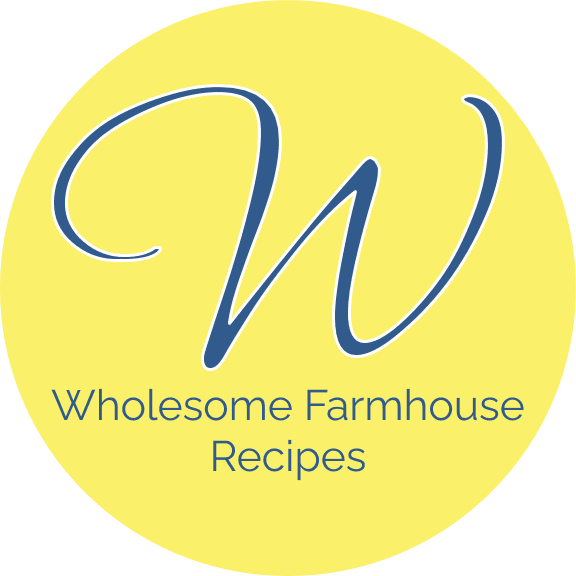There’s something timeless and comforting about a classic moist vanilla pound cake. With just a few simple ingredients, it becomes a dessert that transcends generations.
This is bound to become a treasured recipe in your collection that will be passed down through the generations.
With a dash of love, this pound cake recipe is a testament to the beauty of simplicity in baking.
Dessert for Brunch or Afternoon Tea
It’s a versatile treat, equally at home as the centerpiece of an elegant brunch or a delightful accompaniment to your afternoon tea. Whether you’re an experienced baker or just starting your baking adventure, this recipe promises to deliver a moist, tender, and utterly scrumptious cake every time.
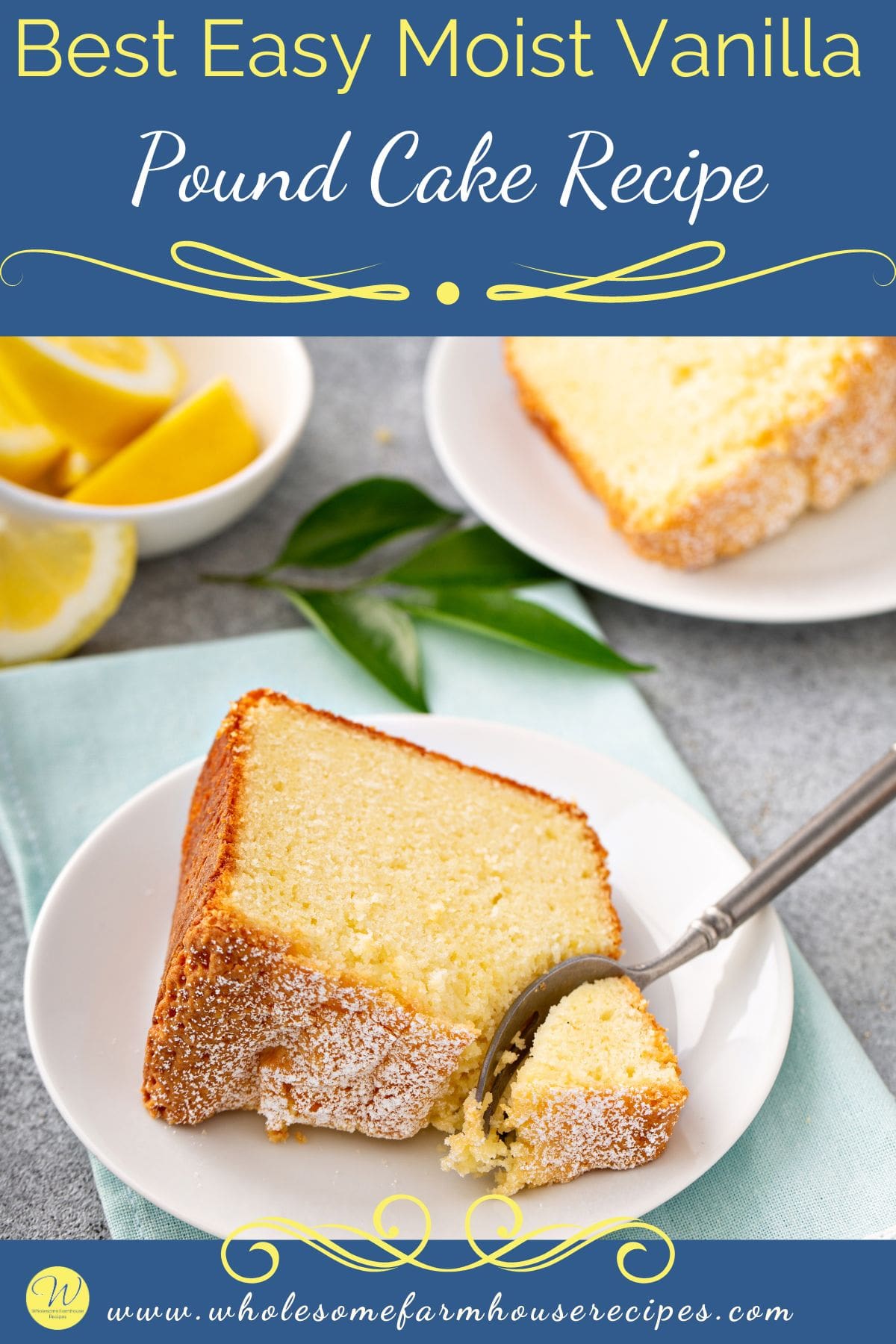
Key Ingredients in the Moist Vanilla Cake Recipe
These carefully selected ingredients, when combined in the right proportions and with the proper mixing technique, create a pound cake that is not only moist and tender but also bursting with the delightful aroma and flavor of vanilla.
Let’s dive into the key ingredients used in this moist vanilla pound cake recipe and explore their roles in creating the perfect cake.
Butter is the backbone of this pound cake recipe. It provides richness, flavor, and a tender crumb. Make sure to use unsalted butter, as it allows you to control the salt content in the cake.
Granulated Sugar sweetens the cake and also helps create a tender texture. It combines with the butter to form a light and fluffy base during the creaming process.
Eggs add structure, moisture, and richness to the pound cake. They also help with leavening, ensuring the cake rises properly. Using room temperature eggs is important, as they incorporate better into the batter.
Pure Vanilla Extract is the star of the show! Vanilla extract infuses the cake with a delightful aroma and a warm, comforting flavor. Always use pure vanilla extract for the best results.
Sour cream is the secret to the cake’s moist and tender texture. It adds richness and tanginess while also contributing to the cake’s moisture content. Make sure it’s at room temperature to prevent curdling when mixed with other ingredients.
Dry Ingredients
All-Purpose Flour is the main dry ingredient that provides structure to the cake. Be sure to measure the flour correctly by spooning it into the measuring cup and leveling it off with a knife to avoid over-packing.
Baking Powder and Baking Soda. These leavening agents work together to give the cake a nice rise and a tender crumb. Baking powder primarily provides the lift, while baking soda helps with browning and tenderness.
A small amount of salt enhances the overall flavor of the cake by balancing the sweetness and highlighting the vanilla flavor.
It’s a simple yet magical combination that’s sure to impress your taste buds and those of anyone lucky enough to share a slice.
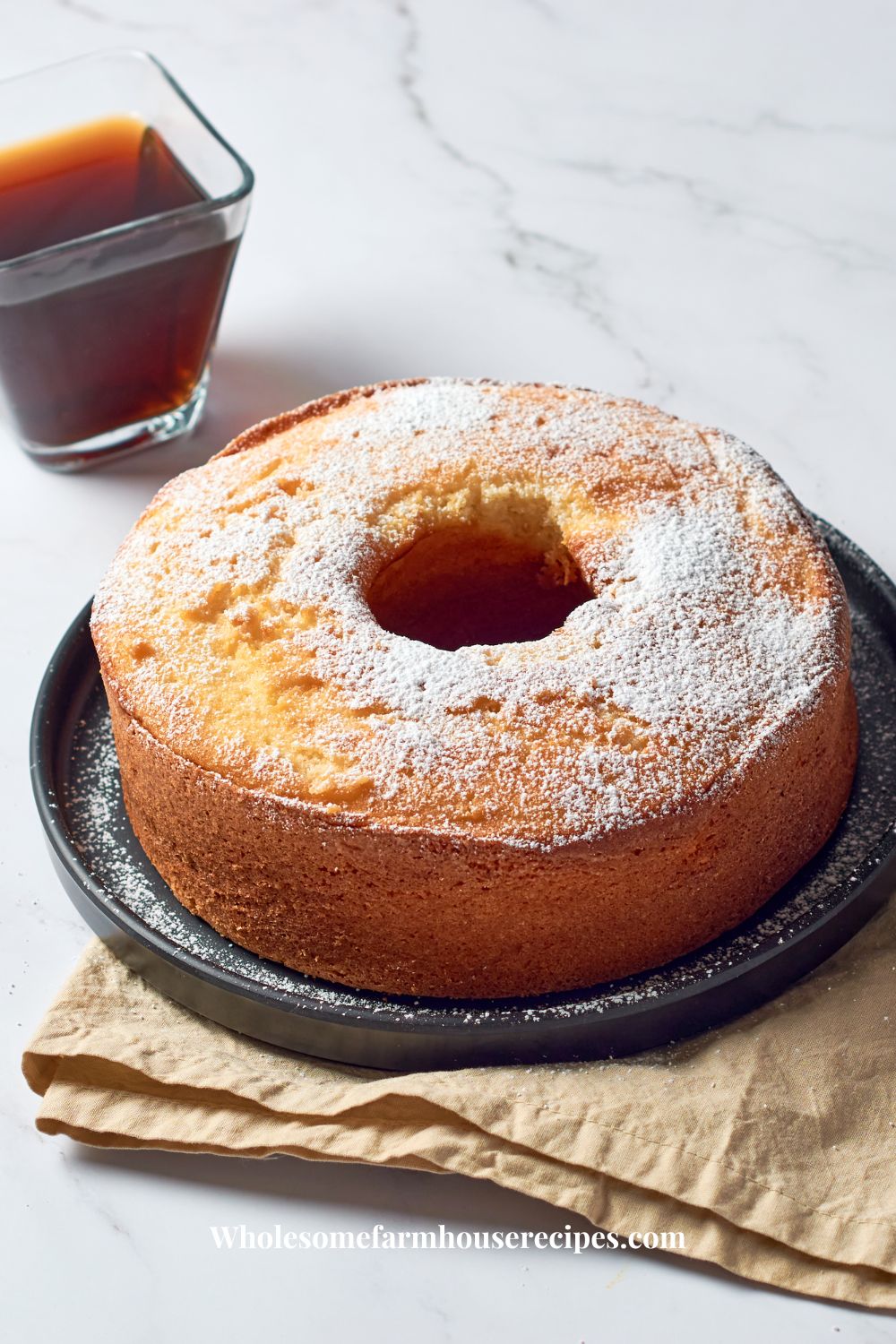
What is the secret to a good pound cake?
The secret to a good pound cake lies in achieving the perfect balance of ingredients and following key techniques. Here are some secrets to making a delicious pound cake:
Ingredients
Accurate measurement of ingredients is crucial. Use dry measuring cups for flour and granulated sugar, and ensure you level off the ingredients to avoid excess or insufficient amounts.
Use high-quality ingredients, especially pure vanilla extract and fresh eggs. Good ingredients contribute to superior flavor.
Room Temperature Ingredients. Ensure that butter, eggs, and sour cream (if used) are at room temperature. This allows for better mixing and emulsification, resulting in a smoother batter and even texture.
Mixing Ingredients
Cream the butter and sugar together until light and fluffy. This process aerates the mixture, creating a tender crumb. Creaming typically takes 3-5 minutes.
Gradual Egg Addition. Add eggs one at a time, beating well after each addition. This helps incorporate air into the batter and prevents curdling.
Sift or whisk the dry ingredients (flour, baking powder, baking soda, salt) together before adding them to the wet ingredients. This ensures even distribution and prevents lumps.
Alternate Wet and Dry Ingredients. When adding the dry ingredients and any liquids (such as sour cream), do so in several additions, beginning and ending with the dry ingredients. Mix until just combined to avoid overmixing.
Don’t Overmix. Overmixing can lead to a tough cake. Mix until the ingredients are just incorporated, and stop as soon as you no longer see streaks of flour.
Baking
Use the Right cake Pan. A bundt pan or tube pan with a non-stick surface is ideal for pound cakes. Make sure to grease and flour the pan to prevent sticking.
Proper Baking. Preheat your oven, and bake the cake at the recommended temperature. Avoid opening the oven door frequently, as this can cause the cake to sink. Use a toothpick or cake tester to check for doneness; it should come out with just a few moist cake crumbs.
Cooling and Removal. Let the cake cool in the pan for about 15-20 minutes before removing it. This helps the cake set and prevents it from breaking apart. Gently run a knife around the edges of the pan before inverting it onto a wire rack to cool completely.
Pound cakes often improve in flavor and texture if allowed to rest for a day or so. Wrap the cooled cake in plastic wrap or foil and store it at room temperature.
Flavor Enhancements. Consider adding extra flavor elements like pure vanilla extract, citrus zest, or spices to make your pound cake unique.
Practice makes perfect, and slight variations in technique can lead to different results. Experiment and adjust based on your preferences until you achieve the ideal pound cake for your taste.
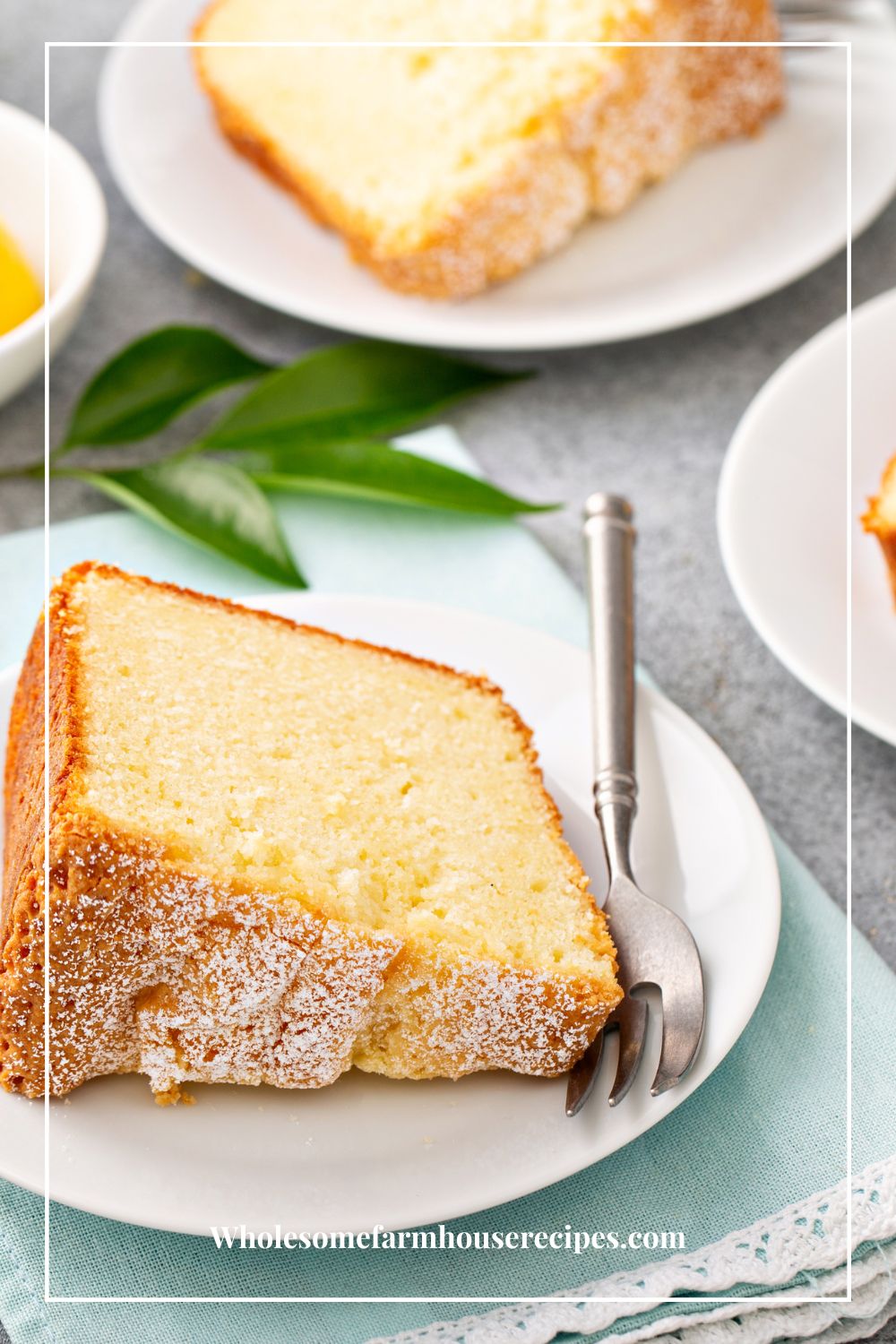
Why Use Sour Cream in Cakes?
Sour cream is a versatile ingredient in baking, and its addition to cakes serves several important purposes:
Sour cream contains water content, which helps keep cakes moist. The extra moisture prevents the cake from drying out during baking and keeps it fresh and tender.
Tenderness. The acidity in sour cream helps tenderize the gluten in the flour, resulting in a softer, more delicate crumb. This contributes to a cake’s overall texture and mouthfeel, making it more enjoyable to eat.
Sour cream adds a subtle richness and creaminess to the cake, enhancing both flavor and mouthfeel. This richness can make a cake taste more indulgent and satisfying.
Flavor. Sour cream has a mild tangy flavor that complements the sweetness of the cake. It can also enhance the depth of flavor in cakes, especially when paired with other ingredients like vanilla or citrus.
Leavening. The acidity in sour cream can react with baking soda, a common leavening agent, to help the cake rise. This reaction produces carbon dioxide gas, which creates bubbles in the batter, contributing to a lighter, fluffier texture.
Extended Shelf Life. Sour cream’s moisture content can also contribute to a longer shelf life for cakes, as it helps prevent them from drying out too quickly.
Incorporating sour cream into cake recipes can be particularly helpful when baking dense or rich cakes like pound cakes, coffee cakes, and chocolate cakes.
It ensures that the final product is not only moist and flavorful but also has a pleasant texture that keeps well over time.
If you’re concerned about the tangy flavor of sour cream, rest assured that in most cake recipes, it’s used in moderation, and the tanginess is subtle and complementary rather than overpowering. The result is a cake that’s balanced in both sweetness and flavor.
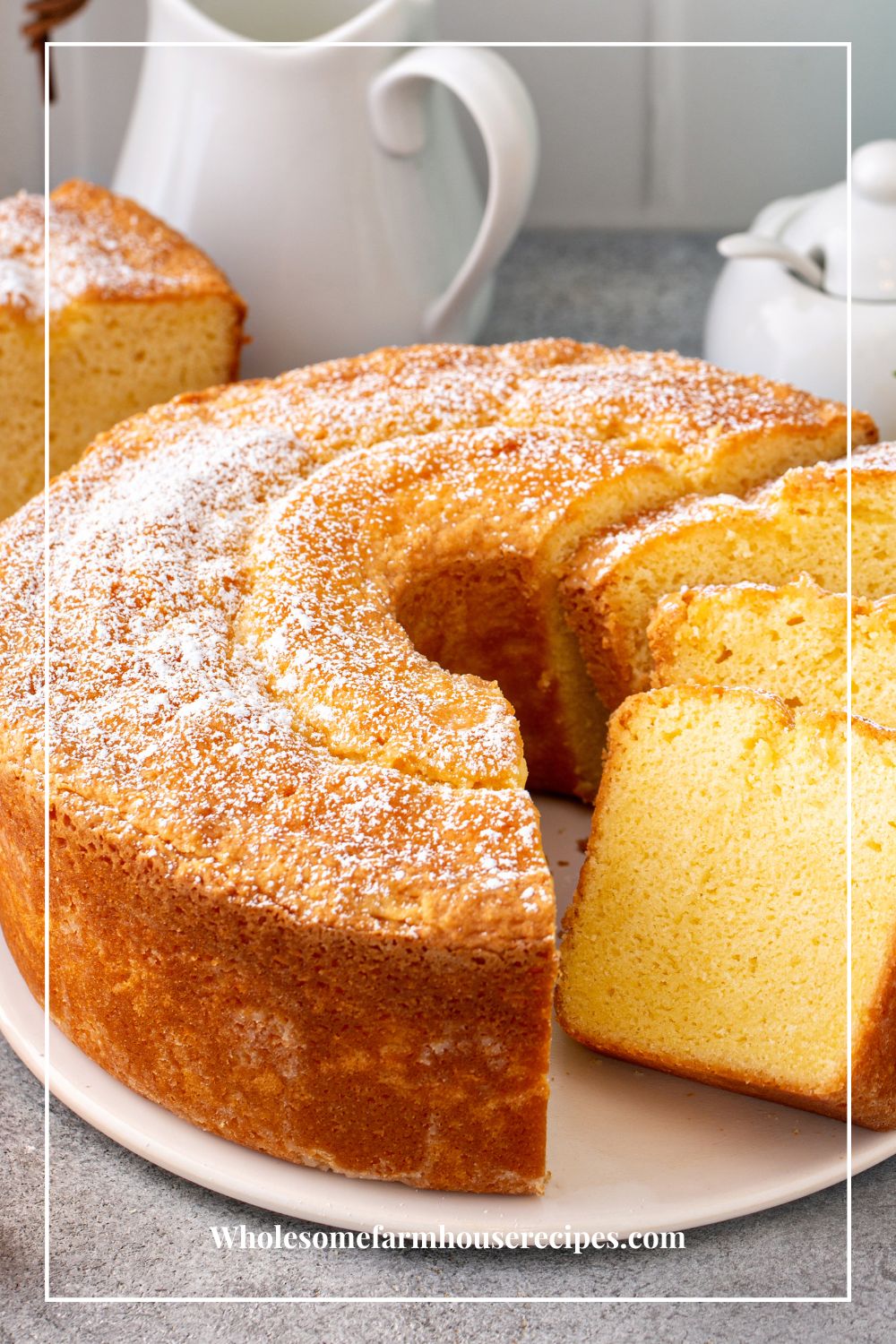
What Kind of Toppings Work Well with a Vanilla Bundt Cake?
A vanilla bundt cake is a versatile dessert that pairs well with a many toppings, adding both flavor and visual appeal. Here are some delicious toppings and garnishes that work beautifully with a vanilla bundt cake.
Classic Toppings
Vanilla Ice Cream. This is a time-tested pairing with any cake. We always have some on hand as it adds just a touch of dairy goodness.
Powdered Sugar. A simple dusting of powdered sugar is an elegant and classic choice. It adds a touch of sweetness and a snowy appearance to the cake. You can use a sifter or a fine-mesh strainer to evenly distribute the powdered sugar.
Vanilla Glaze. Drizzling a vanilla-flavored glaze over the cake enhances the vanilla flavor and adds a glossy finish. To make a basic vanilla glaze, combine powdered sugar, a small amount of milk or cream, and a splash of vanilla extract until you achieve your desired consistency.
Lemon Glaze. For a tangy twist, try a lemon glaze. It combines the sweetness of the cake with the zesty brightness of lemon. Lemon juice and zest mixed with powdered sugar make a delightful and refreshing glaze.
Chocolate Ganache. Chocolate and vanilla are a classic pairing. A smooth, rich chocolate ganache drizzled over your vanilla bundt cake creates a beautiful contrast in flavors. You can make ganache by melting chocolate with cream or milk.
Fruit Compote. Fresh fruit compote or a fruit sauce made from berries, peaches, or citrus fruits adds a burst of fruity flavor and a pop of color to your cake. It’s a great way to balance the sweetness of the cake with natural fruitiness.
Fresh berries like strawberries, raspberries, or blueberries are a vibrant and refreshing topping. They offer a burst of color and a juicy, fruity contrast to the cake.
Whipped Cream. A dollop of freshly whipped cream is a simple yet delightful choice. It adds a creamy, airy element that complements the cake’s texture.
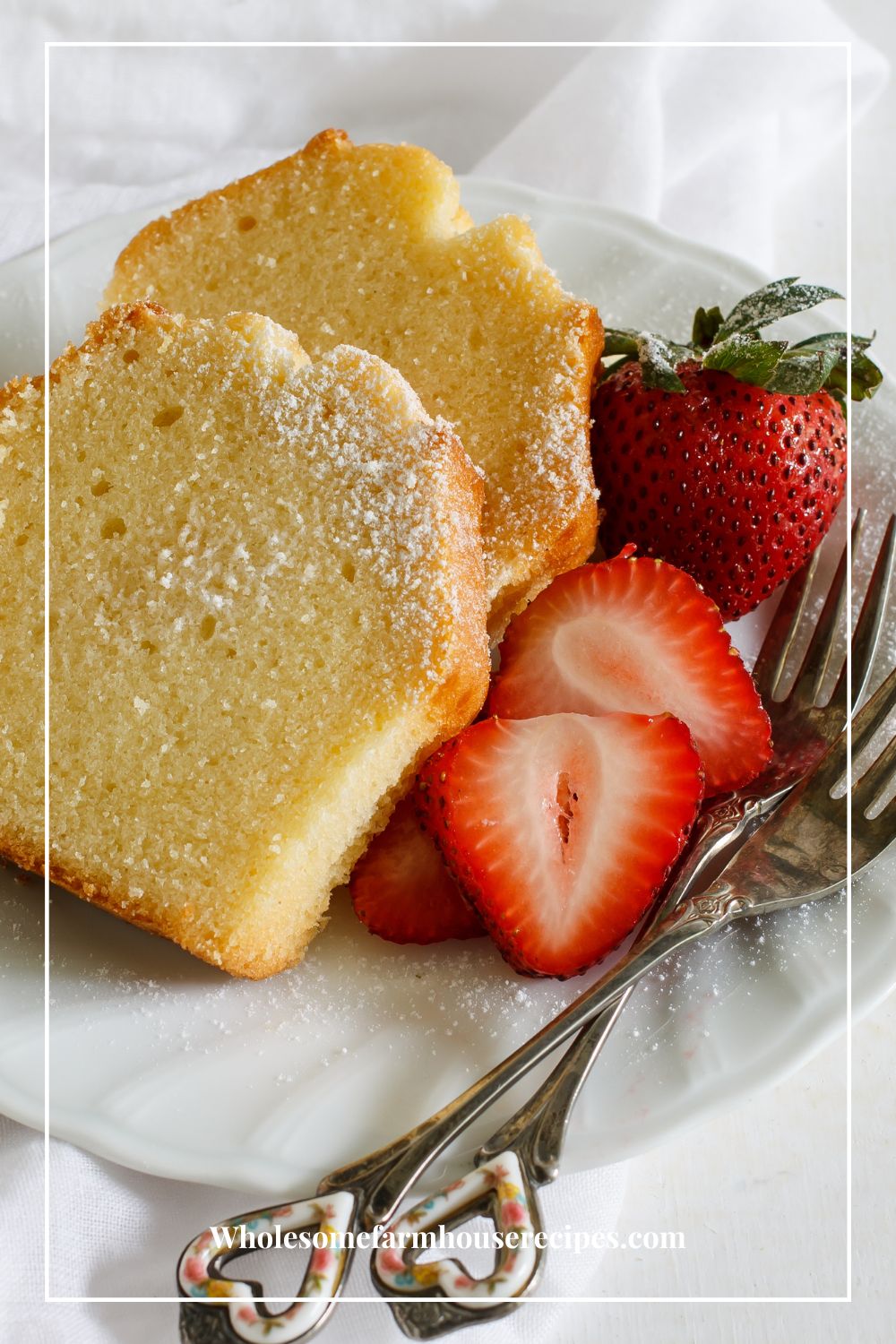
Bakery Style Toppings
Toasted Nuts. Chopped and toasted nuts, such as almonds, pecans, or walnuts, can provide a satisfying crunch and a nutty flavor that pairs nicely with the vanilla. Sprinkle them over the glaze or frosting for added texture.
Caramel Sauce. Drizzling warm caramel sauce over a vanilla bundt cake adds a luscious, sweet caramel flavor and a beautiful, glossy finish.
Edible Flowers. For an elegant touch, consider decorating your cake with edible flowers, such as pansies or violets. They add a touch of natural beauty and a subtle floral note.
The choice of topping depends on your personal preferences and the occasion. Feel free to mix and match these toppings or get creative with your own combinations to create a vanilla bundt cake that suits your taste and style.
What makes a pound cake turn out dry?
A pound cake can turn out dry for several reasons, and understanding these factors can help you avoid dryness in your baked goods. Here are some common reasons why a pound cake might be dry:
Overbaking. Baking the cake for too long or at too high a temperature can cause it to dry out. Pound cakes should be baked until a toothpick inserted into the center comes out with a few moist crumbs, not until it’s completely dry.
Incorrect Oven Temperature. An oven that runs too hot can cause the cake to dry out quickly. Make sure your oven is properly calibrated and use an oven thermometer to confirm the temperature accuracy.
Too Much Flour. Using too much flour can result in a dry cake. Be sure to measure your flour accurately by spooning it into the measuring cup and leveling it off with a knife. Avoid packing it into the cup.
Not Enough Fat. Pound cakes are known for their richness, and reducing the amount of fat (usually butter) can lead to a drier texture. Be sure to use the recommended amount of fat in your recipe.
Overmixing. Overmixing the batter can lead to overdevelopment of gluten, resulting in a tough and dry cake. Mix just until the ingredients are combined to avoid this issue.
Lack of Moisture-Retaining Ingredients. Pound cakes often include ingredients like sour cream, yogurt, or buttermilk to add moisture. If your recipe calls for one of these ingredients, make sure you include it.
Stale Ingredients. Using stale or old ingredients, especially flour or leavening agents like baking powder, can affect the texture and moisture of the cake. Always use fresh ingredients.
Improper Storage.
If you don’t store your pound cake properly after baking, it can dry out. Wrap it tightly in plastic wrap or foil to prevent moisture loss.
To prevent a dry pound cake, it’s essential to follow the recipe carefully, pay attention to baking times and temperatures, and use high-quality, fresh ingredients. With the right techniques and attention to detail, you can enjoy a perfectly moist and delicious pound cake.
What is the difference between pound cake and vanilla cake?
Pound cake and vanilla cake are two distinct types of cakes, each with its own unique characteristics. Here are the primary differences between them.
Ingredients
Pound cake is known for its simple and straightforward ingredients. Traditionally, it consists of four main ingredients in equal proportions: butter, sugar, eggs, and flour. Pound cakes are rich and dense due to the high quantity of butter and eggs.
Vanilla cake, as the name suggests, is flavored with vanilla extract but typically includes a wider range of ingredients. It often includes additional leavening agents like baking powder or baking soda, which result in a lighter and fluffier texture compared to pound cake. Other ingredients, such as milk or buttermilk, are also commonly used to add moisture and flavor.
Texture
Pound cakes are dense, moist, and have a fine, tight crumb structure. They tend to be heavier and butterier in taste and texture.
Vanilla cakes have a lighter, fluffier, and more tender texture. They are often characterized by a soft and moist crumb, making them well-suited for layer cakes and cupcakes.
Flavor
Pound cakes have a rich, buttery flavor with a subtle sweetness. The primary flavor comes from the butter and eggs, with a hint of vanilla if it’s added.
Vanilla cakes have a more neutral flavor profile, with a pronounced vanilla taste. They serve as a blank canvas for various fillings, frostings, and flavorings, making them versatile and adaptable to different combinations.
Versatility
Pound cakes are often enjoyed on their own or with simple toppings like powdered sugar or a glaze. They are less commonly used for layer cakes or intricate decorations due to their dense texture.
Vanilla cakes are versatile and commonly used as the base for layer cakes, cupcakes, and celebration cakes. They can be paired with a wide variety of fillings, frostings, and flavorings, allowing for endless customization.
Therefore, the main differences between pound cake and vanilla cake are the ingredients, texture, flavor, and versatility. Pound cake is characterized by its simplicity, denseness, and buttery flavor, while vanilla cake is known for its fluffier texture, neutral flavor with a strong vanilla presence, and adaptability for various cake styles and decorations.
What is the Best Way to Store This Cake?
To ensure your vanilla pound cake stays fresh and delicious, it’s essential to store it properly. Here’s how to store it and how long it typically lasts:
Storage
If you plan to consume the cake within a day or two, you can store it at room temperature. Wrap it tightly in plastic wrap or aluminum foil to prevent it from drying out. Place it in an airtight container or cake carrier if you have one. Keep it in a cool, dry place, away from direct sunlight and heat sources.
If you want to extend the cake’s shelf life, you can refrigerate it. Again, wrap it well in plastic wrap or foil to maintain moisture. Place it in an airtight container or cake keeper to prevent absorption of odors from the refrigerator. Refrigerated pound cake can last for up to a week.
Freezing Pound Cake
For longer-term storage, you can freeze pound cake. Wrap individual slices or the whole cake in plastic wrap, followed by aluminum foil or a freezer-safe container. Label with the date to keep track of freshness. Pound cake can be frozen for up to 2-3 months. When ready to enjoy, allow it to thaw in the refrigerator or at room temperature.
Always use your best judgment and inspect the cake for any signs of spoilage, such as mold or off-putting odors, before consuming it. Proper storage practices are key to enjoying your vanilla pound cake at its best for as long as possible.
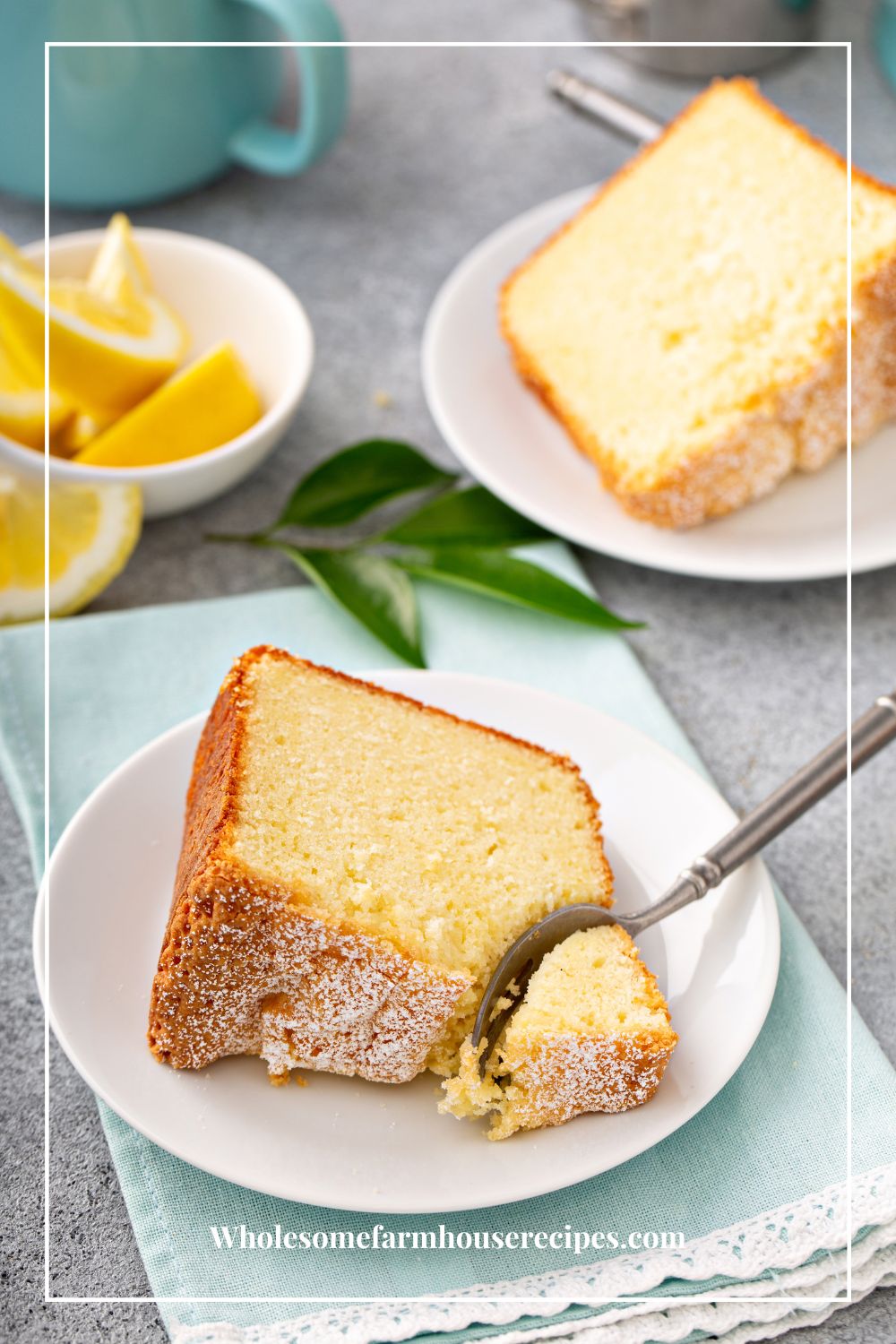
How do I prevent a bundt cake from sticking?
Preventing a bundt cake from sticking to the pan is crucial for a successful and attractive presentation. Especially if you use a pretty one that has a lot of grooves. Here are steps you can take to ensure your bundt cake releases easily from the pan. These steps are actually good practice for any cake that you make.
Grease the Pan
Use a baking spray or a pastry brush to apply a generous amount of cooking oil or melted butter to every nook and cranny of the bundt pan’s interior. Pay close attention to the intricate design of the pan.
Dust with Flour
After greasing the pan, lightly dust it with all-purpose flour. This helps create a barrier between the cake batter and the pan, making it less likely to stick.
Use Baking Spray with Flour
Some baking sprays are formulated specifically for bundt pans and already contain flour. These can be a convenient option, as they provide both grease and flour in one step.
Avoid Overfilling
Be mindful not to overfill the bundt pan with cake batter. Leave some space at the top to allow the cake to rise without spilling over the edges. Overfilled cakes are more likely to stick.
Tap and Rotate
After pouring the cake batter into the greased and floured bundt pan, gently tap the pan on the countertop to help release any air bubbles and settle the batter. Then, give the pan a slight rotation to ensure even distribution of the batter.
Use the Right Pan
Choose a good-quality non-stick bundt pan with a non-stick coating. A well-maintained non-stick surface is more likely to release the cake without sticking.
Proper Cooling
Allow the cake to cool in the pan on a wire rack for about 15-20 minutes after removing it from the oven. This helps the cake set and contract slightly, making it easier to release.
Loosen the Edges
Once the cake has cooled for a bit, use a thin knife or an offset spatula to gently loosen the edges of the cake from the pan. Be careful not to scratch the non-stick coating.
Invert Carefully
Invert the bundt pan onto a serving platter or a wire rack to release the cake. Give it a gentle shake or tap if necessary. If you’ve greased and floured the pan properly, the cake should release easily.
Wait for Complete Cooling
Allow the cake to cool completely before attempting to remove it from the pan. A warm cake is more delicate and may be prone to sticking.
By following these steps and being thorough in greasing and flouring your bundt pan, you can significantly reduce the chances of your bundt cake sticking and ensure a beautifully shaped, intact cake when it’s time to serve.
Best Easy Moist Vanilla Pound Cake Recipe
As an Amazon Associate I earn from qualifying purchases.
Kitchen Essentials
Ingredients
- 1 Cup Unsalted Butter 2 sticks, softened
- 2 Cups Granulated Sugar
- 4 Large Eggs room temperature
- 2 Teaspoons Pure Vanilla Extract
- 3 Cups All-Purpose Flour
- 1/2 Teaspoon Baking Powder
- 1/2 Teaspoon Baking Soda
- 1/2 Teaspoon Salt
- 1 Cup Sour Cream room temperature
Instructions
- Preheat your oven to 325°F (163°C). Grease and flour a 10-inch (12-cup) bundt cake pan or tube pan.
- In a large mixing bowl, cream the softened butter and granulated sugar together until light and fluffy, which should take about 3-4 minutes. Scrap the sides of the bowl periodically to make sure that everything is incorporated.
- Add the eggs one at a time, beating well after each addition. Stir in the vanilla extract.
- In a separate bowl, whisk together the flour, baking powder, baking soda, and salt.
- Gradually add the flour mixture to the wet ingredients, alternating with the sour cream. Start and end with the dry ingredients, mixing until just combined. Do not overmix the cake batter, as this can make the cake dense.
- Pour the batter into the prepared bundt pan or loaf pan, smoothing the top with a spatula.
- Bake in the preheated oven for about 1 hour and 15 minutes or until a toothpick inserted into the center of the cake comes out clean or with just a few crumbs attached. Since oven temperatures can vary, check for doneness at 1 hour. You don’t want to overbake this as baking time can vary.
- Once the cake is done, remove it from the oven and let it cool in the pan for about 15-20 minutes.
- After it has cooled slightly, run a knife around the edges of the pan to loosen the cake, and then invert it onto a wire cooling rack to cool completely.
- Once the cake is completely cool, you can dust it with powdered sugar or drizzle with a simple glaze, if desired.
- Slice and enjoy your delicious moist vanilla pound cake!
